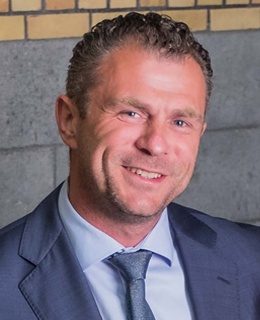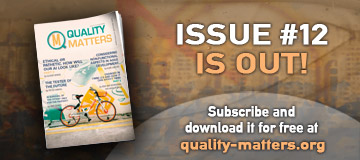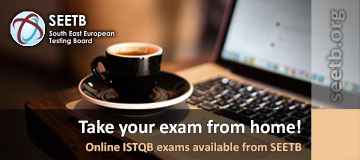
Paul Gerrard
Gerrard Consulting, UKPaul Gerrard is a consultant, teacher, author, webmaster, programmer, tester, conference speaker, rowing coach and publisher. He has conducted consulting assignments in all aspects of software testing and quality assurance, specialising in test assurance. He has presented keynote talks and tutorials at testing conferences across Europe, the USA, Australia, South Africa and occasionally won awards for them.
Educated at the universities of Oxford and Imperial College London, he is a Principal of Gerrard Consulting Limited and the host of the Technology Leadership Forum and co-founder of JPG Associates and the Testing Festival conference. He was the Programme Chair for the 2014 EuroSTAR conference in Dublin and for several other conferences in recent years.
In 2010 he won the EuroSTAR Testing Excellence Award and in 2013 he won the inaugural TESTA Lifetime Achievement Award. He won the ISTQB Testing Excellence Award in 2018.
He is author of the Test Skills Framework - a future skills framework for software testers and the Leadership in Testing program. He is also Editor-in-Chief of the Technology Knowledge Base.”
Testing, Models and Coverage
Testing is a process in which we create mental models of the environment, the program, human nature and the tests themselves.” Boris Beizer said that in 1990, but the idea that testers use models is much older than that. For almost everything humans do – that involves complexity – we create models to simplify, to scope, to mechanise, to understand.
Models are an essential part of being human. To take a few steps requires us to understand the configuration of all of the larger bones and joints of our bodies and the tensions in around 100 muscles. Our brains must understand all this, send an orchestrated set of nerve impulses to all these muscles to take a single step and calculate, calibrate and recalculate second by second – but much faster than that.
It takes huge processing power to control mechanical robots that simulate human movement. Humans simply don’t have that power, so we must simplify, through mental models. Modelling is essential, innate and human. Our brain is a superb modelling engine. As developers and testers, let’s use it to advantage.
In this tutorial, Paul explores how we think as testers and how we use models to simplify, scope and explain what we do. Consider how our understanding of a problem is in effect, a model. Our approaches to testing are models. We explain what we do as testers as meaningful models – to stakeholders.
Paul explains how successful test design and execution automation is based on models too.

Predrag Skokovic
Quality House, SerbiaPredrag Skokovic is professional software developer and software tester with many years of experience in the IT industry. He graduated at the Faculty of Sciences, University of Novi Sad, Department of Mathematics and Informatics. He worked for several semesters as a demonstrator at the Faculty of Mathematics, after which he spent some years in a regional bank as system administrator. Then, for more than a decade, Predrag was building his knowledge and experience in a software development company, where he became interested in the field of quality control.
By applying an active approach, while leading development teams in numerous international projects, he worked hard to raise awareness about the necessity of including software testing activities early, from the idea to the realization of the software product. Through many years of dedicated work, he was involved in technical automation projects in the field of medicine and petrochemistry, as well as in the finance and banking sector. The initial enthusiasm to share knowledge has never left him, therefore he has become a regular (and rewarded) speaker at international conferences dedicated to software testing and guest lecturer at the University of Novi Sad.
Today, after years of engagement in the world of software testing, Predrag is member of the South East European Testing Board (SEETB), a professional consultant and accredited ISTQB trainer, co-founder and president of the Board of Test'RS Club, a community of professional software testers and co-founder and managing director of Quality House in Serbia.
Test Planning Explained
Has it ever occurred to you that you forgot to buy something, or do it, or call someone? Yes, me too, we're humans. Sometimes it helps when we record an information, which is there to remind us of our obligations. For example, when going to grocery shop, or renovating an apartment, or preparing for a tutorial.
When testing software, planning the implementation of test activities can help us overcome unpleasant situations. I’m often told that writing a long test plan that no one reads is ‘old school’. However, there’s a difference between test planning and a test plan.
A test plan is a document in which we record the most important information and agreed decisions related to test activities, such as: what is being tested, what are the goals of testing, how testing will be performed at a certain level, who will perform different test tasks, etc. Testing, just like software development, needs a good structure, because in that way we are more efficient, effective and, above all, transparent about the activities and their results. Creating a test plan ‘forces’ us to think carefully (to plan) in advance about all the important details related to testing the software we’re working on, as well as to anticipate potential risks that may arise. Then why testers very often do not plan test activities and what happens when the planning is neglected?
In this tutorial we will discuss the following topics:
● software test models,
● test process in context,
● test planning vs test plan,
● test strategy and test approach,
● risks,
● and many more.
Most importantly, we’ll exercise on a real-life example how to plan for test activities and to write it down in a test plan.
During the tutorial we will reference ISO 29119 - software testing standard, in order to guide our thoughts and actions, as any other relevant standard or framework would do.
This tutorial is intended for software testers, test leaders, test managers, test consultants and others that are involved or willing to become more engaged in the process of test planning.

Kari Kakkonen
Dragons Out Oy, FinlandKari Kakkonen has M.Sc. in from Aalto University (aalto.fi). He has also studied in University of Wisconsin-Madison (wisc.edu) in United States. He has ISTQB Expert Level Test Management Full, Agile Tester, Test Automation Engineer, Scrum Master, SAFe and DASA DevOps certificates, and works mostly with agile testing, lean, test automation, DevOps and AI. He has in testing since 1996.
Kari Kakkonen is author and CEO of Dragons Out Oy, creating a fantasy book to teach software testing to children. Kari Kakkonen is working in Finland at Knowit (knowit.fi), which is a Nordic ICT services company known for testing consultancy and software development, and other innovative ICT related services.
Kari is Treasurer of Finnish Software Testing Board FiSTB (fistb.fi), ISTQB Executive committee 2015-2021. Kari has been included in IT–magazine “Tivi” 100 most influential people listing. Kari is co-author of Agile Testing Foundations –book. Kari is a singer, snowboarder, kayaker, husband and dad.
Agile Tester
Learning Objectives:
After completing the tutorial you can handle the basic terminology of agile testing and are familiar with methods and techniques in agile projects. You know where to find more information about agile testing.
Audience:
The course is intended for IT professionals involved in Software Testing in agile projects.
Agile Testing Essentials:
• The Fundamentals of Agile Software Development
• Aspects of Agile Approaches (XP, Kanban, Scrum)
• Exercise: User story writing and review
• Fundamental Agile Testing Principles, Practices and Processes
• Agile Testing Methods
• Assessing Quality Risks and Estimating Test Effort
• Exercise: Estimation
• Techniques in Agile Projects
• Exercise: Exploratory testing
• Tools in Agile Projects
Requirements for participants:
You will need your own laptop, as we’ll be doing the exercises electronically in Mural.

Olivier Denoo
ISTQB® President, BelgiumOlivier is the VP of ps_testware SAS, the French subsidiary of ps_testware group. His role is business development, recruiting the local expert team, building sustainable partnerships, promoting software testing and ps_testware. He is also involved in auditing test projects and organizations and provides high-level consultancy and support.
Olivier is the President of ISTQB.
For 20 years he has been an international speaker who spoke at Test-IT Africa, SQA-days, BA-days, JFIE, TestWarez, ReQuest, SEETEST, STF; Iqnite, JFTL, JMTL, JTTL, Analyst-days, Quality Week, Eurostar, Dasia.
He's also actively participating in the development of new certification schemes, like IQBBA (Business Analysis), IREB (requirements engineering), IBUQ (usability) or more recently the "7 skills for effective teams" (soft skills and team organization).
BDSBET – Business-Driven Scenario-Based Exploratory Testing
Pitch: The wide adoption of Agile frameworks, the constant need for speed constitute altogether the major challenges that testers and QA-ers need to face on a daily basis, especially now that IT products and systems become mainstream while constantly increasing in integration and complexity.
Test techniques, like exploratory testing, can be of help when traditional approaches are not sufficient to cope with the challenge of the pace vs. coverage.
This workshop will give the audience a view on useful approaches that will help better understand users and test against their expectations; with a strong focus on exploratory testing and Ux.
What’s in it for me: understanding on how and when to use exploratory testing; Ux and user-driven approaches that can be used in testing
Ref: The basis for this tutorial has been described in an article in Quality Matters N°10 March 2020
Agenda:
- Context and definitions
- Description of various tours and approaches
- Pros and cons – when to apply
- A small tour inside user’s minds (product charters, Ux, Ux heuristics, context usage…)
- Techniques to approach Users:
Fly blind with Exercises “learning Japanese in 5 min”, “My operator”
Personas – concept and use
What if… - distancing technique
6 Thinking hats - questioning
Practice exercises
Improvised party
Let’s get high
A good reading
Q&A + personal case if time allows

Michaël Pilaeten
CTG, BelgiumBreaking the system, helping to rebuild it, and providing advice and guidance on how to avoid problems. That is Michael in a nutshell. With 15 years of experience in test consultancy in a variety of environments, he has seen the best (and worst) in software development.
In his current role as Learning & Development Manager, he is responsible for guiding the company’s consultants, partners and customers on their personal and professional path towards excellence.
The Tester’s Toolbox: which techniques can you use as a tester to improve your quality, the quality of your team and the quality of the software you’re working on?
Which techniques can you use as a tester to improve your quality, the quality of your team and the quality of the software you’re working on?
This workshop will guide you through a collection of techniques to be added to your toolbox. Working within the project constraints, there is always room for improving the efficiency and effectiveness of your testing activities.
Join me in discovering new ways of achieving quality and value together!

Graham Bath
German Testing Board, GermanyGraham Bath is a freelance consultant and uses over 30 years of testing experience to support customers with consultancy, training, assessments and test process improvements. Graham is the ISTQB Working Group chair for the Specialist Level Certified Tester qualifications and co-authored the new syllabus on Usability Testing. Graham is also a member of the German Testing Board as is a frequent presenter and tutorial provider at conferences around the world. He co-authored the book “The Software Test Engineer’s Handbook”.
Test Process Improvement in Agile Projects
The principal objectives of the tutorial are:
• Understand test process improvement in an agile context
• Propose an easy-to-use approach for practicing test process improvement in agile/SCRUM projects
• Walk through the approach in a typical project scenario
• Enable you to position test process improvement in an agile context.
• Become the “go-to” person for test process improvement on your agile project



